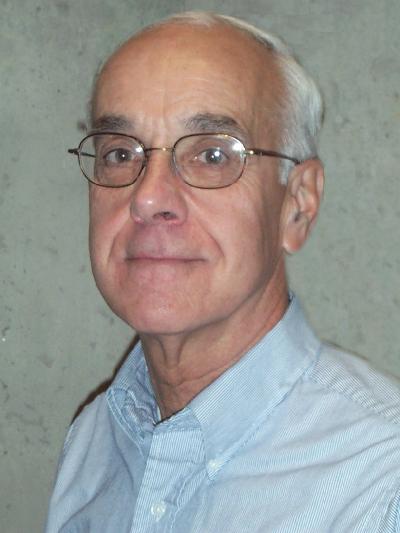December 5, 2002
Eyman wouldn’t make it in China, Wagner learns
Northwest leaders often gripe that it’s hard to get anything done with all the NIMBY resistance to new projects, populist ballot initiatives, anti-government paranoia and “analysis paralysis.”
Such constraints don’t hinder China, where the UW is participating in the first Sino-U.S. collaboration in urban planning.
Fritz Wagner, a senior lecturer in policy studies and urban design and planning at UW Bothell and Seattle, was struck by the differences during a recent planning mission to Shangdong Province.
“The mayor of Rizhao looked at some recently built buildings and decided they weren’t up to his standards — so he had them torn down and rebuilt,” Wagner said.
Wagner was in coastal Rizhao as the only academic member of a six-person delegation from the American Institute of Certified Planners. Rizhao’s leaders had sought the American experts’ help in figuring out how to handle an expected doubling of the city’s 270,000 population during the next decade, part of a flood of millions of rural Chinese into teeming cities.
When the U.S. experts saw that Rizhao authorities already were beginning to tear down and replace a network of small-scale 19th century villages that had evolved throughout the downtown area, the Americans said, in essence: “Whoa!”
Instead of demolishing the villages, the Americans suggested preserving and revamping them, and connecting them via transit and parks to create a lively series of linked neighborhoods. The benefit of historic preservation is something the U.S. learned the hard way, Wagner said, after creating so many sterile, depopulated downtowns.
“We basically shared with the Chinese our failures,” Wagner said. “We wanted them to learn from our mistakes.”
Bracing for a massive influx of rural “immigrants,” Chinese urban planners are highly aware of New York City’s successes and failures in coping with a massive influx in the early 1900s. But many Chinese-trained experts were not aware of more recent trends in urban planning, Wagner said.
In addition to sharing historic-preservation techniques, the U.S. group worked with their Chinese counterparts on such issues as greenbelts and growth boundaries, sustainability and neighborhood consultation.
“They were very receptive to our ideas,” Wagner said. “They’re very serious. They’re really trying to get it right.”
Of course, sharp cultural and political differences remain between a China that is taking baby steps toward consumer capitalism and a United States that already chokes on its own sprawl and congestion. The Rizhao mayor, for example, never ceased expressing a fondness for wide roads; an amenity not especially prized by foreign advisers more attracted to transit-friendly development. Water quality was another concern among the Americans, while drinkable water remains something that most Chinese usually buy in a bottle rather than drink from the tap.
Despite the differences, Chinese and U.S. planners found the overall collaboration so rewarding, Wagner said, that plans are being laid to create a permanent urban-planning training center in the Shandong region, with the UW playing a central role.
Rizhao is merely the latest global foray for Wagner, who came to the UW this year after two decades as dean of the College of Urban and Public Affairs at the University of New Orleans. A high-profile figure in Louisiana, Wagner established a World Health Organization center at New Orleans during the 1980s and has conducted research throughout the Middle East.
A Michigan native, Wagner graduated from the UW with a doctorate in urban planning before joining the University of New Orleans in 1974. In 1980, he was named dean of the College of Urban and Public Affairs, and as he expanded that program he also got it involved in community projects, such as establishing the Jean Lafitte National Historical Park and the Lake Pontchartrain Basin Foundation
Wagner came to Seattle a year ago to be with his wife, who had been enticed out of retirement to lead a private school.
Wagner now divides his time between Bothell, where he is a senior lecturer for the master’s in policy studies program, and Seattle, where he works at the College of Architecture and Urban Planning.
Tall, trim, silver-haired and exuding the easy confidence of one who has had the ear of mayors and governors, Wagner can’t resist commenting on his new home region, especially his frustration over what he sees as political gridlock.
“When I was in New Orleans, we looked to Seattle as an exemplar of better ways to solve urban problems — growth management, transportation, environmental protection, land-use planning and general innovation.
“Now, having lived in Seattle for a little over a year,” he said, “it appears to me that something has either changed or the Seattle I envisioned was really a myth.”
Transportation schemes are haphazardly proposed and other serious problems are much debated but rarely solved, he said, while the education system vital to the state’s future struggles for lack of support.
Wagner quickly adds that the leadership model he urges for Seattle is not China.
“In China, they need to find some mechanisms to plan with people, not for people,” Wagner said. “I am not advocating that we adopt their system. I’m just saying that our elected officials need to find the will and way to work together. There are bright and talented people here and we can find the ways and means to get the job done. We do not have time to continually do process over product.”



